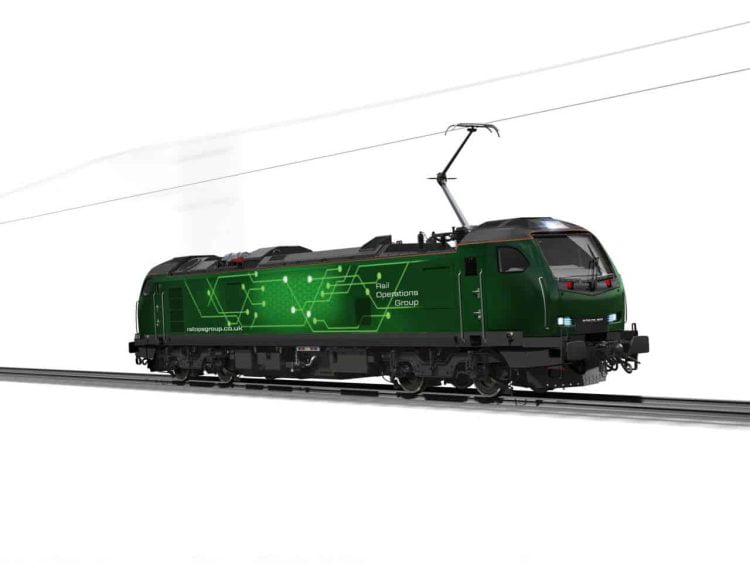Production of the Class 93 locomotive fleet being built by Stadler for Rail Operations UK has started with the completion of the first body.
The Class 93 is Stadler’s first tri-mode locomotive and will be the first tri-mode locomotive to operate in the UK and can operate from overhead electric wires, internal batteries, and from its diesel engine.
Assembly of all the components and sub-systems will soon begin with the installation of piping, cabling, traction systems, and other equipment. After a period of testing and approvals, the first locomotive is scheduled to be moved to the UK in March 2023, with entry into service a few months later.
Rail Operations UK and Stadler signed a framework agreement in 2021 for 30 Class 93 tri-mode locomotives, with an initial order of ten. Class 93 is a Bo-Bo mixed-traffic locomotive based on Stadler’s Class 68 and Class 88 locomotives, which have been operating successfully in the UK for several years.

All locomotives on order for Rail Operations (UK) are being made at Stadler’s Valencia plant. Maximum speed of the Class 93 is 110 mph compared with the 100 mph of the Class 68s and Class 88s.
The locomotives will have three different power sources. In electric mode, they will run on 25kV AC overhead lines with a power up to 4,600 kW. On non-electrified lines, they can operate using a Stage V 900 kW diesel engine or from two Lithium Titanate Oxide (LTO) traction battery packs. The battery packs provide an extra 400 kW of power to supplement the diesel engine when the locomotives are running in diesel/battery hybrid mode. The locomotives can also work in battery mode alone, enabling carbon-free operations.
When operating in diesel or diesel/battery mode, the locomotives will significantly reduce exhaust gas emissions for both rail freight and potential passenger transport services, which will support net zero targets in the UK. They also include efficiency features to minimise energy consumption. A high-efficiency transformer and AC traction system with IGBT technology and one inverter per axle, will provide better adhesion control, reduce energy consumption, and increase reliability. Kinetic energy is recovered during braking.
The locomotives are also future-proofed, with an innovative hybrid coupler that enables coupling via either a draw hook or through automatic coupling.
Iñigo Parra, CEO of Stadler Valencia, commented:
“This is a project of firsts: the Class 93 is not only the first tri-mode locomotive to run in the UK, but it’s Stadler’s first tri-mode locomotive, illustrating our commitment to green technology and genuine desire to help governments and businesses around the world de-carbonise their cities, towns, and villages. We are delighted to see these locomotives take shape and look forward to continued working with our customer and partner, Rail Operations UK.”
Karl Watts from Rail Operations UK commented:
“We’ve been working with Stadler for four years now to specify and design a locomotive for the future. The end product, the Class 93 tri-mode, is a locomotive of great operating versatility, incredible energy efficiency and packed full of technology which, not only allows us to transform UK train operations but lead the way in UK rail decarbonisation. The locomotive also enables Rail Operations UK to penetrate new operating markets, in particular express freight, previously unavailable using its existing locomotive fleet.”






Responses
Still don’t think these are being used yet.
Betvthey will be a complete failure.
Will these be ideal for Port of Felixstowe-Nuneaton and other rail freight routes to and from Port of Felixstowe.
There’s not been a mainline electric locomotive built in the UK since the 1990s (class 92), no local market = no local manufacturer.
Monster!
Why are these locos being built in Spain and not the UK?
UK prefer contract out of UK because it is cheaper than have employees in UK.
Why are these locos being built in Italy and not the UK?
UK prefer contract out of UK because it is cheaper than have employees in UK.